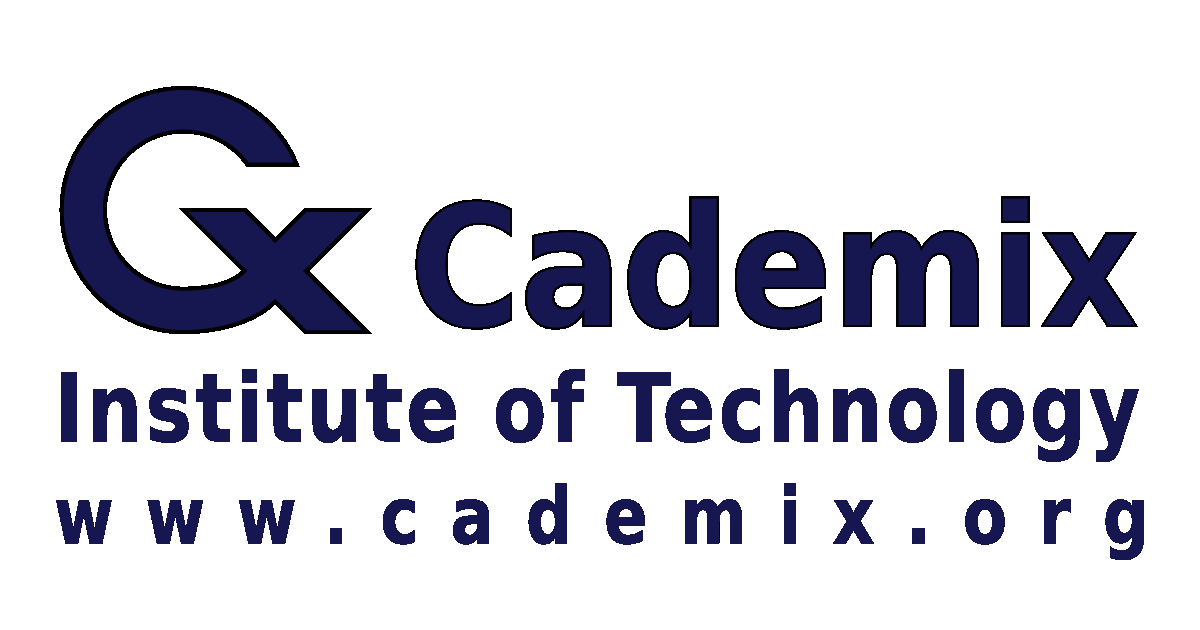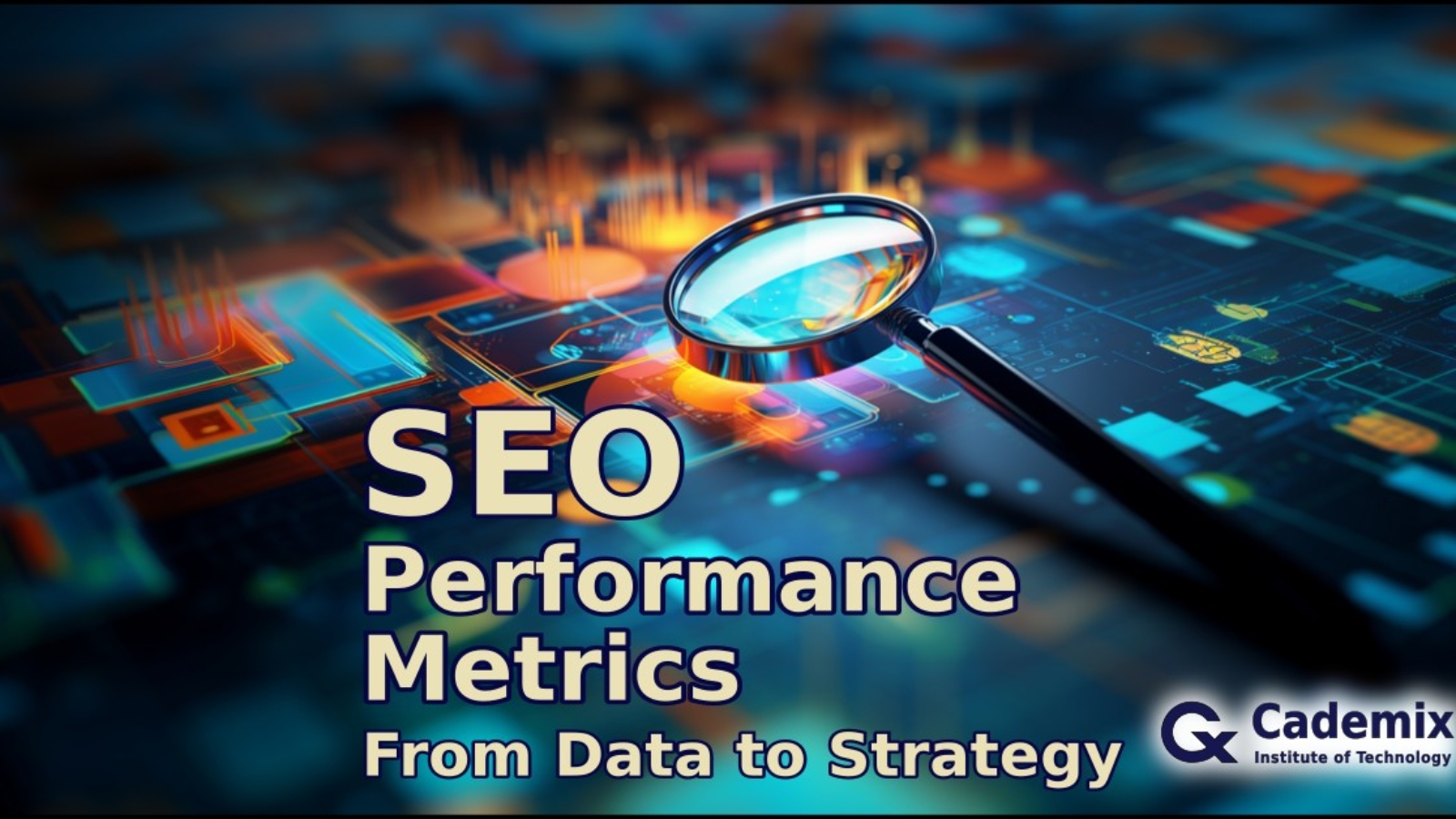This article aims to shed light on the critical role of SEO performance metrics in the realm of digital marketing. It delves into various types of metrics, the tools to measure them, and how to transform this data into actionable SEO strategies.
Mahdi Amin-Akhlaghi, Cademix Institute of Technology
Introduction
Importance of SEO Performance Metrics in Digital Marketing
In today’s highly competitive digital landscape, Search Engine Optimization (SEO) is more important than ever for businesses. However, the effectiveness of an SEO strategy is not something one can intuitively gauge. This is where SEO performance metrics come into play. These metrics serve as the diagnostic tools that inform businesses whether their SEO initiatives are yielding the desired outcomes or if adjustments are necessary.
The Connection Between Data and SEO Strategy
Understanding the wealth of data that SEO performance metrics provide is instrumental in shaping a robust SEO strategy. From user behavior to website performance, these metrics offer a comprehensive view of how well your site is performing in search engine rankings. More importantly, they can show where you need to make changes to meet your business objectives effectively.
Overview of the Article’s Scope
This article aims to offer a comprehensive guide on SEO performance metrics. It will delve into different types of metrics, from technical to on-page and off-page metrics. Additionally, it will explore tools that can be used for measuring these metrics and discuss how to translate this data into actionable insights for your SEO strategy.
The Role of Metrics in SEO
Why Metrics are Essential for SEO
In the field of digital marketing, data drives decisions. The use of metrics in Search Engine Optimization (SEO) is paramount for businesses aiming to rank higher on search engines, increase traffic, and ultimately, generate more revenue. Metrics offer an empirical foundation for evaluating the success of SEO efforts, thereby allowing for strategic planning and more effective marketing campaigns.
Commonly Used Performance Indicators
Key Performance Indicators (KPIs) like click-through rate (CTR), bounce rate, page load speed, and organic search traffic are some of the most commonly used metrics in SEO. These indicators provide valuable insights into various aspects of SEO performance, from how well your keywords are ranking to how engaging your content is for your audience. Through the careful analysis of these KPIs, businesses can make informed decisions that enhance their SEO strategies.
Types of SEO Metrics
Technical Metrics (Page Speed, Mobile-friendliness)
In the realm of SEO, technical metrics serve as a foundation for optimal user experience and search engine crawling. Among these, page speed and mobile-friendliness are vital. A slow page speed can frustrate users and negatively affect search engine ranking, while a site’s mobile-friendliness is now a significant factor in Google’s ranking algorithm.
On-Page Metrics (Keyword Ranking, Organic Traffic)
On-page metrics primarily focus on how well your site’s content is optimized for relevant keywords and how it performs in organic search results. Keyword ranking is an essential indicator for understanding your website’s visibility in search engine results pages (SERPs). Meanwhile, organic traffic provides insights into the number of visitors who come to your site via unpaid search results.
Off-Page Metrics (Backlinks, Domain Authority)
Off-page metrics offer a glimpse into how authoritative and credible your website appears to search engines. Backlinks, or inbound links from other sites, contribute to your domain authority and, consequently, your SEO performance. Domain authority serves as a predictive measure of a website’s ability to rank in search engines and is influenced by the quality and quantity of backlinks.
Tools for Measuring SEO Metrics
Analytics Tools (Google Analytics, SEMrush)
Understanding SEO metrics necessitates using analytical tools that can accurately track performance. Google Analytics remains a staple for most digital marketers, offering insights into organic traffic, user behavior, and a range of other essential metrics. SEMrush, on the other hand, offers specialized functionalities tailored to SEO, including keyword ranking, site audit features, and competitor analysis.
Performance Dashboard Platforms
Aside from conventional analytics tools, performance dashboards have emerged as powerful platforms for real-time SEO monitoring. These dashboards aggregate data from various sources, providing a comprehensive view of your SEO metrics in one centralized interface. This makes it easier to spot trends, make adjustments, and ultimately, strategize more effectively.
Interpretation of Data
Data Visualization Techniques
Understanding SEO metrics goes beyond merely collecting data; it’s about making that data actionable. Data visualization techniques, such as graphs, heatmaps, and dashboards, are instrumental in breaking down complex data sets into understandable insights. These techniques allow you to quickly identify trends, patterns, and areas that require attention.
Making Sense of the Numbers
Numbers in isolation don’t provide much value; it’s the context that makes them meaningful. Interpreting the data involves comparing current metrics with past performance, industry benchmarks, and business goals. Such an analysis can offer actionable insights that can be directly applied to your SEO strategy, leading to better decision-making and, ultimately, improved performance.
Real-world Applications and State of the Art
Companies Successfully Leveraging SEO Metrics
Many businesses have elevated their digital presence by making data-driven decisions based on SEO metrics. Companies like Airbnb and Amazon utilize sophisticated data analytics tools to monitor various performance indicators, including organic traffic, click-through rates, and keyword rankings. By doing so, they can adapt their strategies in real-time and stay ahead of the competition.
Emerging Trends in SEO Metrics
The landscape of SEO is ever-changing, and the metrics we use to measure success are evolving along with it. One of the growing trends is the importance of user experience signals, like Core Web Vitals, in search engine rankings. Similarly, metrics surrounding voice search and semantic search are becoming increasingly relevant as technology advances. Keeping abreast of these emerging trends will be critical for adapting your SEO strategy and ensuring long-term success.
Actionable Insights: Strategies Based on Metrics
Tips for Developing Strategies from Metrics
Data is only as good as the actions it inspires. The key is to translate the numbers into actionable insights that guide your SEO strategy. For instance, if your metrics show a high bounce rate on specific pages, consider revising the content or layout to better hold the audience’s attention. Or if certain keywords are driving high-quality traffic, consider creating more content around those terms.
KPIs to Prioritize for Immediate Action
Not all metrics are created equal when it comes to immediate action. Focusing on the right KPIs can result in quick wins. For example, if your click-through rate (CTR) is low but you rank well for certain keywords, tweaking your meta descriptions or titles could yield immediate improvements. Likewise, if you notice particular pages lag in loading time, optimizing those could lead to instant gains in page views and overall user satisfaction.
Looking Forward: Future of SEO Metrics
Impact of Machine Learning and AI
As we move further into the digital age, the role of machine learning and AI in interpreting SEO metrics cannot be overstated. Algorithms are becoming increasingly sophisticated, allowing for real-time adjustments to SEO strategies based on nuanced interpretations of complex data sets. This offers opportunities for more adaptive, efficient, and effective strategies.
Ethical Considerations in Data Collection and Use
The power of data comes with ethical responsibilities, including data privacy and user consent. As organizations collect more data to fine-tune their SEO strategies, it is critical to maintain an ethical framework that respects user privacy and complies with regulations like GDPR.
A Call to Action for Strategic Use of Metrics
In an environment saturated with data, the strategic use of SEO metrics becomes not just an option but a necessity. Companies must evolve beyond merely collecting data to implementing actionable SEO strategies based on this data. This involves continuous learning, adaptation, and ethical considerations.

